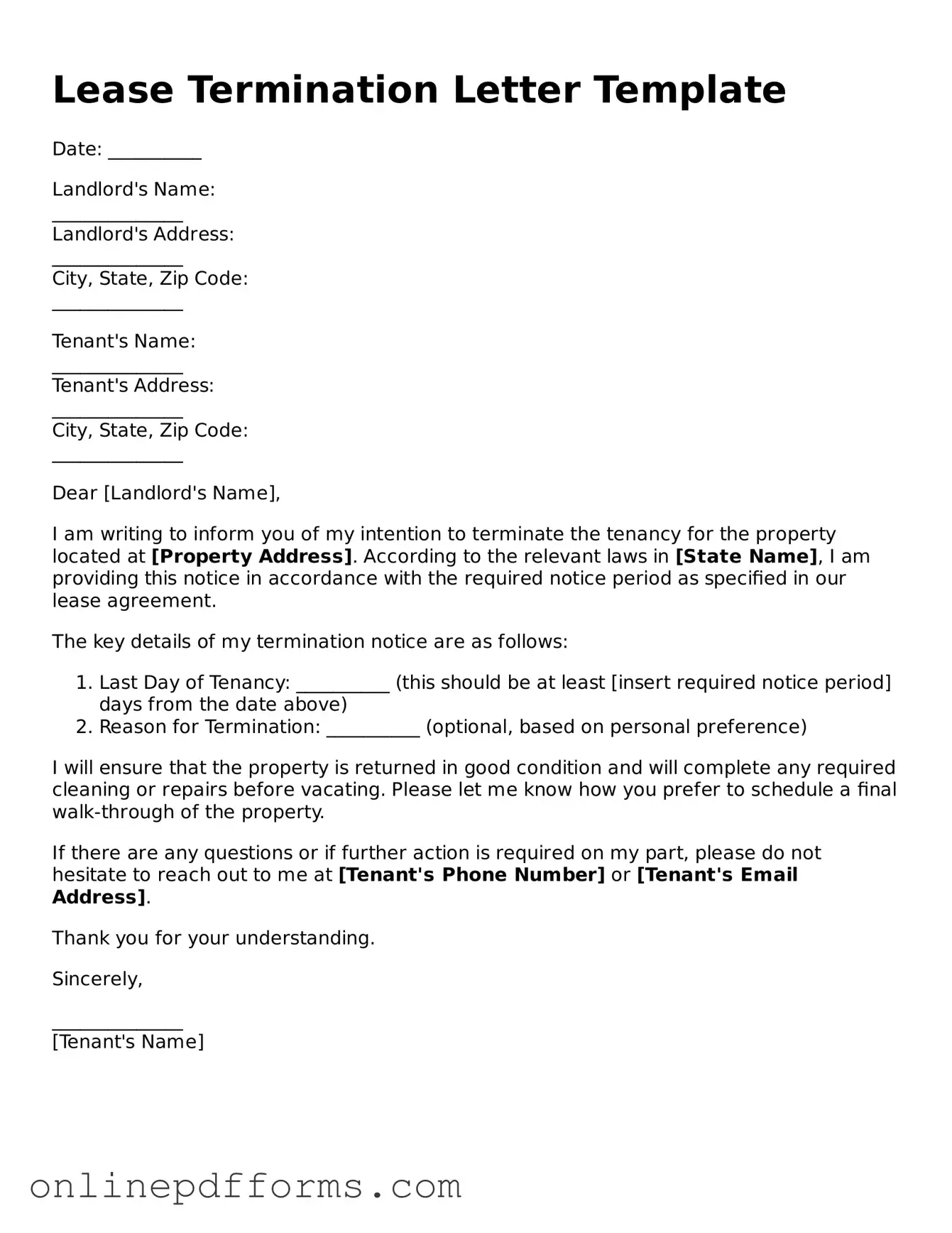The Lease Termination Notice is similar to a Rental Agreement Modification form. Both documents serve to communicate changes regarding a rental arrangement. While the Lease Termination Notice indicates the intention to end a lease, the Rental Agreement Modification form allows for adjustments to the existing lease terms. Both require clear communication and agreement from all parties involved, ensuring that everyone understands the new terms or the end of the rental period.
Another document that bears resemblance to the Lease Termination Letter is the Eviction Notice. An Eviction Notice is issued by a landlord when a tenant fails to comply with the lease terms, often due to non-payment of rent or lease violations. Like the Lease Termination Letter, it formally communicates the end of the tenancy, but it typically involves a more urgent and legal context. Both documents must be delivered in accordance with specific laws to ensure they are valid.
The Notice to Vacate also shares similarities with the Lease Termination Letter. This document is typically used by landlords to inform tenants that they need to leave the property by a certain date. The Notice to Vacate outlines the timeline and reasons for the request, while the Lease Termination Letter may simply state the intent to end the lease. Both documents aim to provide clarity regarding the tenant's responsibilities and the timeline for vacating the premises.
A move-out checklist is another document that complements the Lease Termination Letter. While the Lease Termination Letter signifies the end of a lease, the move-out checklist provides tenants with a guide for preparing the property for return. This checklist helps ensure that tenants leave the rental in good condition, which can affect the return of their security deposit. Both documents are essential for a smooth transition at the end of a rental agreement.
When navigating the various documents involved in the rental process, it is essential to understand their functions and implications. For instance, the Lease Termination Letter signals a tenant's intent to vacate the property, while other documents, like a Rent Concession Agreement and a Move-Out Checklist, help clarify rental adjustments and prepare for a smooth exit, respectively. Additionally, resources like Fillable Forms can assist in obtaining necessary agreements that protect both tenants and landlords in these transactions.
The Sublease Agreement can also be compared to the Lease Termination Letter. When a tenant wishes to leave a property but still has time left on their lease, they may opt to sublease their unit. This document outlines the terms under which another individual can occupy the space. While the Lease Termination Letter communicates the end of a lease, the Sublease Agreement allows for continued occupancy under new terms, highlighting the flexibility that can exist within rental arrangements.
Lastly, the Lease Renewal Agreement is similar in that it addresses the future of the rental relationship. While a Lease Termination Letter indicates that a tenant will not continue their lease, a Lease Renewal Agreement expresses the intent to extend the rental period under potentially revised terms. Both documents require mutual agreement and can significantly impact the tenant's and landlord's plans moving forward.
